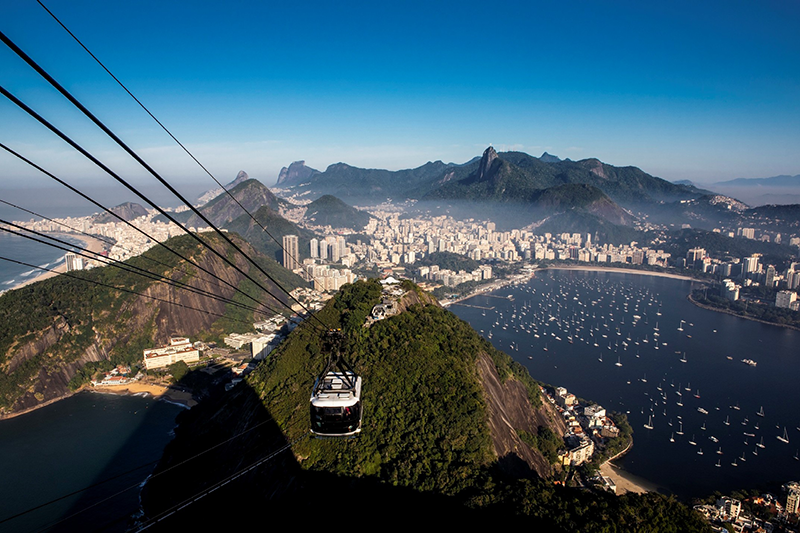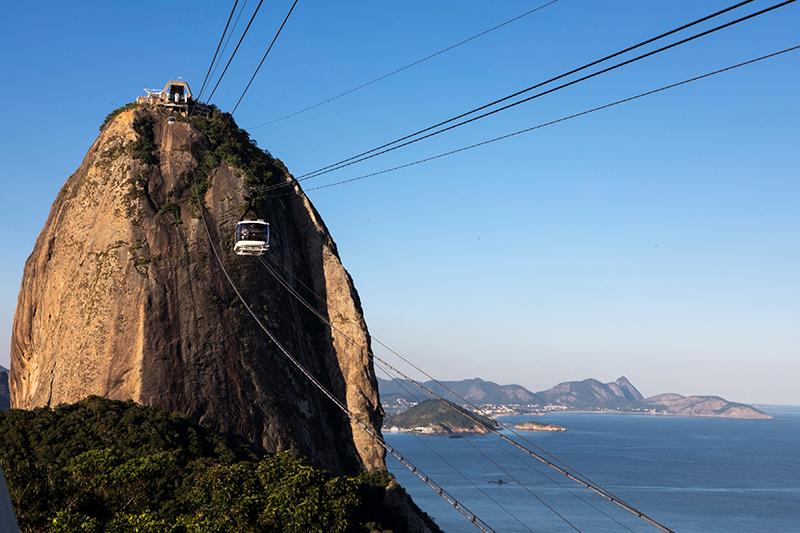Brazilian Cable Car Park Honors its Employees, History, and Local Ecology

Almost anyone who has watched the classic 1979 James Bond movie "Moonraker" will undoubtedly recall one of the most spectacular scenes in James Bond cinema history—when the legendary spy battles a villain named Jaws aboard and atop cable car gondolas, high above the stunning scenery of Rio de Janeiro. Those iconic cable car scenes were filmed on the Bondinho Pão de Açúcar, or the Sugarloaf Cable Car, one of the world’s oldest operating aerial cable car parks, which treasures its history, employees, and environment.
Celebrating 110 years in operation in 2022, the Bondinho park is a landmark of Rio de Janeiro. The original cable car line connects Praia Vermelha to Morro da Urca, a distance of 528 meters, standing at 227 meters high. An extension of 750 meters was later built, at 396 meters above sea level. Both journeys are world-renowned for their breathtaking views.
The cable car system was the dream of Brazilian engineer Augusto Ferreira Ramos, who received permission from the government in 1908 to build the system. Work started in 1910, and the initial stretch, from Praia Vermelha to Morro da Urca, opened in October 1912. The second segment, from Morro da Urca to Sugarloaf Mountain, was completed in 1913. The park has received 50 million visitors since opening, 35% of them guests from abroad. Famous celebrities like Albert Einstein, Prince Charles, Prince Harry, John F. Kennedy, Bob Marley, and Malala Yousafzai have visited the site.
Sustainability
The Bondinho Pão de Açúcar prides itself on its sustainability, taking advantage of the energy efficiency found on aerial lift systems. “Our cable cars use a counterbalance system to operate, so we use very little electric power,” says Sandro Fernandes, CEO of Bondinho Pão de Açúcar. “We’ve also implemented a system where the cabin that goes down supports the rising of the other cabin. Thus, we generate energy and return it to the system. Recently, we’ve also joined the free energy market, where we’re able to buy electricity directly from any power plants, so we chose to buy from those producing renewable, clean power.”
In 2012, Rio de Janeiro was the first municipality recognized by the United Nations Educational, Scientific, and Cultural Organization (UNESCO) as a World Heritage Site in the Urban Cultural Landscape category. In kind, the Bondinho park has adopted 40,000 square meters of green areas at Sugarloaf Mountain. “Areas of great socioenvironmental value [are] recovered and maintained by us for the recovery of the Atlantic Forest and visitor comfort,” says Fernandes.

The park also transforms its solid waste into raw material and fertilizer and has initiated Educa Bondinho, one of the largest environmental education programs offered by a tourist attraction in Rio, with more than 10,000 students and teachers visiting annually. It works to stimulate students’ environmental awareness in a transdisciplinary and fun way, exploring themes related to science, biology, history, geography, ecology, and sustainability. Since launching, the program has received 57,000 students and teachers from more than 800 schools in 60 different cities.
Honoring Employee History
In December 2010, Bondinho Pão de Açúcar opened an exhibition called “História de um Fio” in a space inside the cable cars’ old station at Morro da Urca. It displays artifacts from the cable cars’ history, including the old machines that operated the system. The park also displays two of its old cable cars.
But Bondinho park also believes its 110-year history is indelibly rooted in the contributions of its employees. So in 2018, the “Bondinho Memory” was created.
“The ‘Bondinho Memory’ aims at preserving, integrating, and sharing 110 years of our company’s history, mainly from the employees’ perspec-tive,” Fernandes says. “It was created to perpetuate the testimony of our oldest employee, Giuseppe Pellegrini.”
Some of these testimonials can be found on the park’s website.

The Power of 007
Bondinho Pão de Açúcar park added to its worldwide fame in 1979 when the park’s cable cars were featured in a spine-tingling aerial battle between James Bond and a villain in the spy film “Moonraker.”
“007 is known worldwide,” says Sandro Fernandes, the park’s CEO. “Today we still receive many tourists from around the globe, asking about how the movie was recorded. So, it was very important, not only to us as publicity, but also to all Brazilians.”
In 1976, the movie’s producer, Albert R. Broccoli, chose Rio de Janeiro for his vacation and was on the lookout for locations to film scenes for the movie. “The Bondinho fit the adventurous story very well, with the advantage of offering a stunning view,” Fernandes says. “The scenes recorded here were highly praised for the quality of visual effects. They counted on the support of Bondinho’s technical team and were recorded in a cabin exclusively created for this purpose, in order to preserve the integrity and safety.”
- CORRECTION: The print version of this article in Funworld’s March/April 2022 issue incorrectly stated that the second segment of Bondinho Pão de Açúcar, or the Sugarloaf Cable Car, was completed in 1972. This segment that runs from Morro da Urca to Sugarloaf Mountain was actually completed in 1913. The story has been updated to reflect the correct year. We regret the error.
